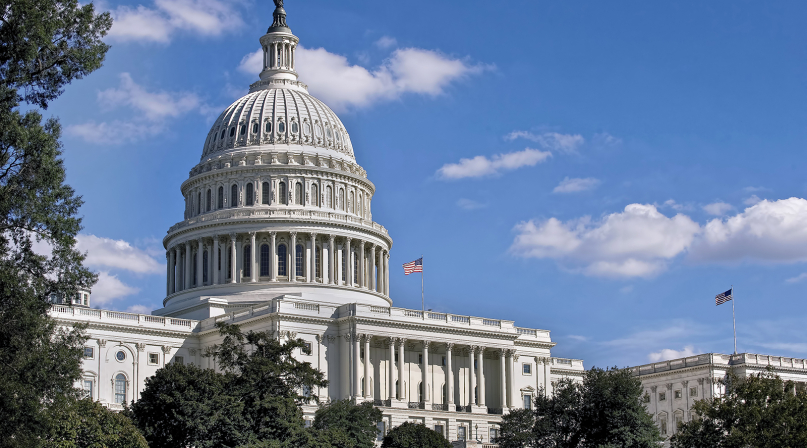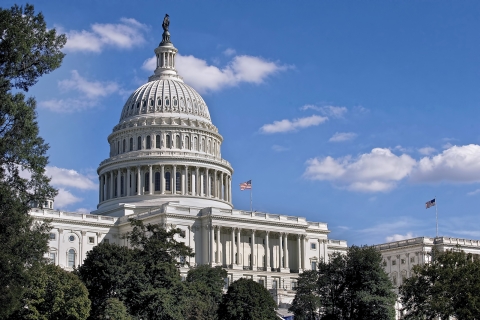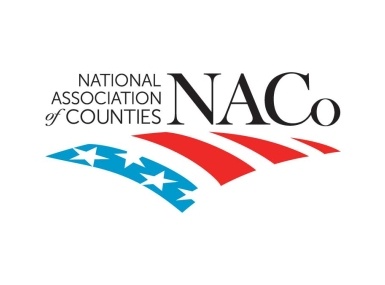U.S. Senate Releases “Skinny” COVID-19 Relief Proposal
Author
Upcoming Events
Related News

On August 18, Republicans in the U.S. Senate released draft proposal for a COVID-19 relief package, the Delivering Immediate Relief to America’s Families, Schools and Small Businesses Act. At $500 billion in direct federal spending and loans, the legislation represents a scaled-back, or “skinny,” version of the Republican Senators’ July 27 proposal, the Health, Economic Assistance, Liability Protections & Schools Act (HEALS Act). Although the bill has not been formally introduced, it signals the direction the Senate may take as they seek to reach a final COVID-19 relief deal in September.
Of note to counties, the Delivering Immediate Relief Act contains similar employer liability, small business support and unemployment measures to the Senate’s previously introduced HEALS Act, as well as education and vaccine development funding proposed in that legislation. The bill offers new funding for the U.S. Postal Service (USPS), but would provide no additional state and local aid. These and other relevant provisions for counties are detailed below.
NO NEW STATE AND LOCAL AID
Similar to the HEALS Act, the Delivering Immediate Relief Act does not allocate additional state and local aid beyond what was already allocated under the CARES Act’s $150 billion Coronavirus Relief Fund (CRF), despite new NACo research that county governments face a $202 billion impact to our budgets through fiscal year (FY) 2021 as a result of the COVID-19 pandemic. In contrast to the HEALS Act, the Senate’s proposal does not contain any retroactive changes to the CRF.
U.S. POSTAL SERVICE ASSISTANCE
The draft measure would provide $10 billion in funding for the U.S. Postal Service (USPS) to ensure operations are strong going into the 2020 election. Additionally, the proposal would allow the USPS to use this funding as a grant in the case the agency’s finances continue to decline.
This figure represents $15 billion less than a bill introduced by the U.S. House of Representatives that would provide $25 billion to USPS as well as prohibit operation changes until after the election. The House will vote on this bill August 22.
NOTABLE PROVISIONS FROM HEALS ACT INCLUDED IN SENATE “SKINNY” PROPOSAL
Beyond no additional state and local aid, the Delivering Immediate Relief Act includes key components of the HEALS Act, suggesting these policies remain significant priorities for Senate Republicans as COVID-19 relief negotiations continue:
- Employer Liability Protections: Similar to the HEALS Act, language from the Safeguarding America’s Frontline Employees To Offer Work Opportunities Required To Kickstart The Economy (Safe To Work) Act is included in the Senate’s proposal, which would provide liability protections for employers, schools and health care providers to discourage lawsuits related to COVID-19, including county employers.
- Small Business Relief: The Delivering Immediate Relief Act would allow eligible small businesses to draw down loans once again from the Paycheck Protection Program (PPP) established under the CARES Act. However, the bill would set a lower revenue-loss threshold for this “second-draw” than the HEALS Act. Additionally, the proposal also omits language included in the HEALS Act that would create a new streamlined loan forgiveness program, instead directing $257.7 billion in funds (offset by a $100 billion rescission of unused funds from the first round) to the existing PPP.
- Pandemic Unemployment Insurance: The proposal would include $300 weekly enhanced unemployment benefits, an increase from the $200 that was included in the HEALS Act, but consistent with the amount of extended federal aid that President Trump directed in an executive memorandum earlier in August. These benefits would last through December 2020.
EMERGENCY APPROPRIATIONS
The Delivering Immediate Relief Act would omit most emergency funding appropriated under the HEALS Act, apart from:
- $105 billion for elementary, secondary and post-secondary education, including $70 billion for the Elementary and Secondary School Emergency Relief Fund, one-third of which would be disbursed immediately with the remainder available for reopening costs. These funds would provide some fiscal relief for those county governments that contribute funding to local school districts but may also limit flexibility and increase administrative burden for local county health and education officials.
- $16 billion for COVID-19 testing, a key component of counties’ COVID-19 tracking and response efforts.
- $29 billion for the development of COVID-19 medical countermeasures and vaccines, which can also be used for telehealth access and infrastructure needs and other public health preparedness and response activities

Attachments
Related News

County Countdown – Dec. 15, 2025
Every other week, NACo's County Countdown reviews top federal policy advocacy items with an eye towards counties and the intergovernmental partnership.

County Countdown – Dec. 1, 2025
Every other week, NACo's County Countdown reviews top federal policy advocacy items with an eye towards counties and the intergovernmental partnership.

Counties Celebrate Key Permitting Inclusions in SPEED Act
NACo issued the following statement in response to the passage of the Standardizing Permitting and Expediting Economic Development (SPEED) Act (H.R. 4776), which advanced out of the U.S. House Committee on Natural Resources on November 20.
